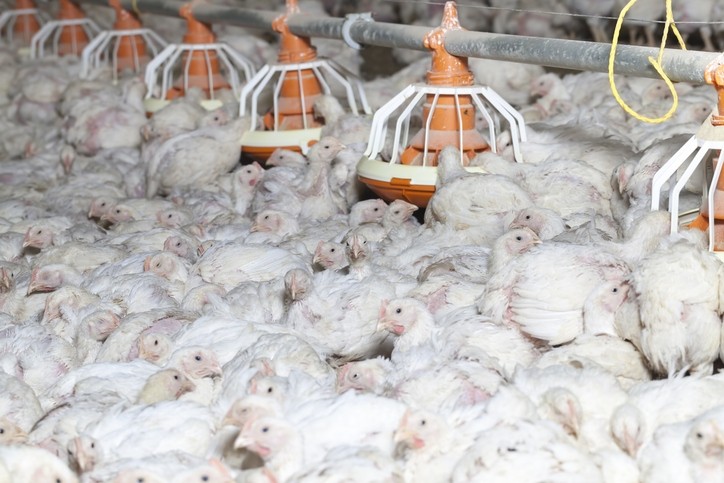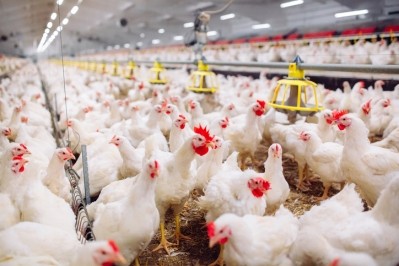IPPE: ADM focused on reducing the risk of pathogens in broiler production and improving layer performance

The team also reported on products to improve laying hen performance.
We caught up with Milan Hruby, director of technical services, and Jose Charal, technical support manager, ADM, who are supporting the roll-out of the Pancosma brand in North America, to hear more. Pancosma joined ADM in 2019 following the acquisition of Neovia.
The ADM studies on feed additives such as plant extracts, butyric acid, short and medium chain fatty acids (SCFA/MCFA), and a whole yeast product, were conducted to take account of production conditions and the diets in North America, Hruby told us.
Moreover, the ADM researchers teamed up on a lot of the studies with some of the leading research facilities and institutions in the US.
Such collaboration lends additional credibility to the research findings, commented Hruby.
The work done, he continued, also reflected ongoing feedback received from customers in North America as to what they see as they greatest challenges for broiler and layer production today.
“We had oral and poster presentations and what we tried to focus on was the topic of efficiency. When you look at the high cost of feed today, we wanted to see if we could show impact on gain and feed conversion, that was one of the goals of the research.
“The second goal related to necrotic enteritis and coccidiosis challenges. Anytime we see customers, we are typically asked how our technologies work in relation to those issues.”
Food safety is another key concern for the industry, and customers often query whether such feed additives can play a role in that respect, he added. So that topic was also top of mind in terms of the priorities for this research.
While the feed additives evaluated have been used commercially, with good market penetration, for many years, the team wanted to see whether a combination of products, with different modes of action, might provide a more uniform and consistent response, said Hruby.
And Charal noted that it is generally recognized now that replacement of antibiotics in poultry diets requires a multi-pronged approach, that combining various feed additives may be more beneficial than relying on a single product. “Knowing how technologies may work together is key as every cent is important for our customers. In this case, having this knowledge will make us effective in a cost-sensitive situation.”
“In terms of replacement products, there is no one silver bullet and the production challenges are multi-factorial,” added Hruby.
The abstracts
A study conducted by the ADM team, in conjunction with the Southern Poultry Research Group, Inc, evaluated the effectiveness of a whole yeast (Pichia guilliermondii, WYP) product (CitriStim), along with an organic fatty acid product (SCFA/MCFA; Daafit Plus) to reduce Salmonella Heidelberg (SH) colonization in broilers.
“The backdrop to that study was previous research on CitriStim showing it has high affinity to bind gram-negative bacteria and, in the case of the SCFA/MCFA technology, studies have demonstrated inhibitory effects on pathogenic bacteria for that product as well. But the products have different mode of actions,” said Charal.
The hypothesis, he said, was that combining the two technologies would deliver a consistent response in terms of impeding SH.
Treatment 1 consisted of a non-challenged control. Treatment 2 consisted of a challenged control, Treatment 3 was a combination of WYP (0.5lbs/ton) and SCFA/MCFA (1lb/ton). Treatment 4 consisted of a combination of WYP (1lb/ton) and SCFA/MCFA (2lb/ton).
The level of SH in the environment, as measured by most probable number (MPN) per boot sock, demonstrated an effect of the feed additives on numerical reduction, with untreated at 3.12 MPN, lower inclusion at 2.57 MPN, and higher inclusion at 2.27 MPN, according to the researchers.
Ten ceca from horizontal (indirectly) challenged and five from directly challenged (seeders) birds were collected from each pen on day 42. There was a reduction in Salmonella prevalence in the horizontally challenged birds by both inclusion rates. The highest inclusion of feed additives had the most significant reduction, said the team.
There was a numerical reduction in the directly challenged broilers that was greater at the higher inclusion, 51.1% untreated; 42.2% lower inclusion and 37.8% higher inclusion, they noted.
Overall, the team said they found that the combination of WYP and SCFA/MCFA may have contributed to a reduction of the SH colonization prevalence in the broilers directly challenged with Salmonella.
Tackling Necrotic enteritis in birds
Another study evaluated the effect of plant extracts, MCFA, and their combination in broilers challenged with Necrotic enteritis (NE). It was carried out by the company in tandem with the Virginia Diversified Research Corporation.
Dietary treatments consisted of a control (Treatment 1; challenged broilers without feed additive), Treatment 2 (a combination of capsicum, carvacrol, and cinnamaldehyde, Xtract 6930) at 0.1g/kg Treatment 3 (a combination of garlic tincture and eugenol, Xtract Shield) at 0.1 g/kg, MCFA (Daafit S) at 1 g/kg (treatment 4),Treatment 5 (half dose combination of Treatment 2 and 4), Treatment 6 (half dose combination of Treatments 3 and 4), and Treatment 7 (half dose combination of Treatments 2 and 3).
Broilers were challenged on day 17, 18, and 19 with a broth consisting of C. perfringens (CP) added via water trough in each challenged pen, they said.
The findings, said the authors, show that no significant 42-day body weight or feed intake differences were observed among the treatments. FCR was significantly improved in birds fed the combination of two PE products (Treatment 7), and numerically improved for combination treatments when compared to the challenged control treatment, they observed.
Treatment 7 demonstrated a 7-point FCR benefit when compared to the infected control at 42 days of age, they said, noting a similar improvement for mortality corrected FCR with broilers fed control diet demonstrating a 5-point increase to FCR when compared to broilers fed a diet containing a combination of PEs (Treatment 7).
Lowest mortality (5.28%) was seen in broilers fed a diet containing a combination of PEs and MCFA (Treatment 6).
The results, they said, suggested that plant extracts and medium chain fatty acids can alleviate performance losses associated with NE.
Coccidia challenge
Further research evaluated the effect of CitriStim, a blend of capsicum and turmeric oleoresin (Xtract Nature, XTN), and a single plant extract (SPX) fed alone or in combination, on broiler performance, lesion scores and oocyst shedding during an experimental coccidia challenge.
The findings indicated that WYP and plant extracts fed to broilers alone or in combination could ameliorate the impact of coccidiosis, said the researchers.
Layer production
The ADM team also carried out an experiment, in collaboration with Virginia Tech, to determine the effects of a commercial plant extract preparations based on capsicum, carvacrol, and cinnamaldehyde (C3; Xtract 6930) and esterified butyric acid – tributyrin (EBA; Daaforce 100) on layer performance during the pre- and peak production period.
They found that a combination of C3 and EBA based on a half dose of each product, significantly improved egg mass and egg production compared to control treatment and numerically improved feed intake, egg weight and feed efficiency.
Shell weight was significantly increased with C3 treatment. The results of this study suggest C3 and EBA could be used successfully in layers during pre- and peak period to contribute to optimal performance, they said.
“In this study, it was interesting to work with a young laying hen flock. We got a very strong response in terms of egg production and feed conversion. We know that butyric acid has an impact on intestinal enterocytes, providing the energy, helping with intestinal strength, and impacting absorption.
“The hypothesis of the use of the combination of three essential oils, our Xtract 6930 technology, which is used quite widely in broiler production, was that it would help with nutrient digestibility. We have a lot of data on that, that it impacts the bird’s production of endogenous enzymes, and helps with the digestion of starch, protein, and lipids. Young laying hens may have some problems with feed intake as egg production is just starting to increase, and very rapidly, so there can be some disproportion between intake and output.
“We think that the impact we got on the performance was due to the improvement in nutrient digestibility. The butyric acid response was very unusual and unexpected, the combination [of the two technologies] enabled the strongest response in those birds,” concluded Hruby.








